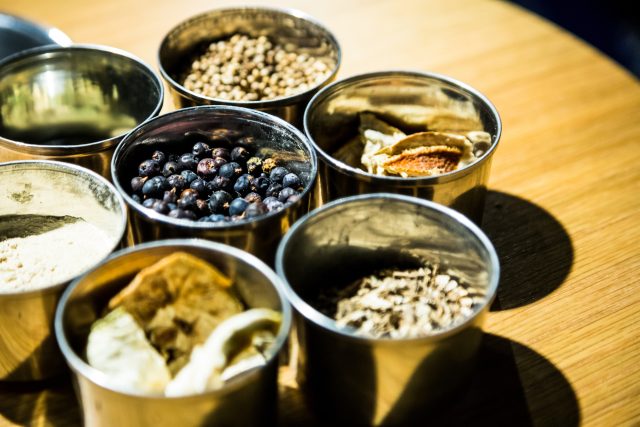How science might secure gin’s future
Researchers at Heriot-Watt University in Edinburgh have trialled a new technique that “fingerprints” the chemical compounds in gin, a discovery that could provide greater quality guarantees for consumers buying the spirit.

Dr. Ruaraidh McIntosh, Dr. Dave Ellis and PhD student Kacper Krakowiak, alongside the University of Edinburgh’s Professor Dušan Uhrín tested 16 gins using nuclear magnetic resonance (NMR) spectroscopy to analyse the flavour compounds within each spirit.
Ellis said: “Understanding which compounds are in a gin, and have an impact on flavour and mouth feel, could help distillers improve their gin, or guarantee uniformity of flavour.”
“At the moment, most gin analysis is carried out using mass spectrometry. It’s effective and highly sensitive but does not provide a complete picture of the composition in a single experiment in the way that NMR can,” Ellis explained. “NMR basically fingerprints the gin’s chemical compounds. It does this by detecting the signals given by the Hydrogen atoms in each compound. These act as markers and enable identification.”
The technique, which was first utilised in the 1930s and is usually used for determining the structure of molecules, can provide results within five minutes, according to the researchers.
The aromatics in gin, and other drinks including wine, are often analysed with mass spectrometry. However, one of the virtues of NMR over it, the chemists claim, is that a single experiment can provide a complete picture.
“NMR can distinguish between different structural forms of individual molecules, and there are many of these cases in gin. For example, the flavour compounds pinene and limonene have the same atomic makeup but have different structures and, critically, flavours. We tested some fruit gins and gin liqueurs. The NMR identified the different varieties of sugar present in the gin, which are introduced through flavour additives, and their quantity,” Ellis revealed.
Partner Content
The team also noted that Heriot-Watt’s International Centre for Brewing and Distilling has created a library of 72 botanicals (grown in Scotland) used by gin makers which provides some overlap with this latest research.
Of course, the key botanical used in gin, is juniper, which also gives the spirit its name, from the Dutch word for the berry ‘genever’. Ellis suggested that the use of NMR spectroscopy might play a role in ensuring that this integral flavour can still be added to gin in the years to come:
“UK distillers rely on imported juniper berries for their gin, and climate change could affect their quality and availability. If their traditional supply dries up, will sourcing juniper berries from elsewhere change the flavour? That’s what we could determine with this technique.”
While juniper does grow in the UK, according to Yorkshire-based distiller Sing Gin it is in decline due to the loss of habitat, and that a large portion of the juniper used in UK gin production is grown in the Balkans.
For Ellis, the ultimate advantage of the technique is that it will provide a degree of security for consumers that the bottle they have bought is indeed what it has been labelled as: “We just need to try and find a way of reassuring consumers that the ‘gin’ that they are drinking really is gin.”
Ellis also drew parallels with how “well-regulated” the whisky market is. Scientists in Australia have developed a “robot nose” that can sniff the difference between cheap and expensive whiskies.
Related news
FSS issues urgent warning over Orkney whisky and gin




